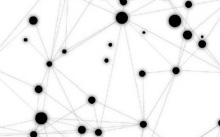 Open your data! That's the theme behind the new Semantic Web logo created by the W3C. The three sides of the tri-color cube are meant to represent the RDF triple model, and the peeled back lid is suggestive of the main theme of opening your data for everyone to access. For now they ask that you use the images that include the W3C logo, at least until the new Semantic Web logo becomes more widely recognized on its own.
Open your data! That's the theme behind the new Semantic Web logo created by the W3C. The three sides of the tri-color cube are meant to represent the RDF triple model, and the peeled back lid is suggestive of the main theme of opening your data for everyone to access. For now they ask that you use the images that include the W3C logo, at least until the new Semantic Web logo becomes more widely recognized on its own.
They've also created 80x15 sized buttons for RDF, OWL, SPARQL, and GRDDL! I'm not too wild about those kinds of buttons, but I'm sure we'll see them springing up everywhere in no time. The buttons come in blue, green, orange, gray, and purple.


 Today we reach an important milestone in this series. We are crossing a great divide between familiar technologies such as XML, Unicode, URI, and RDF to the Web Ontology Language (OWL). This, my friends, is where things really start to get interesting because this is the point where the Semantic Web vision really starts to take form. Today, we present a screencast exhibiting
Today we reach an important milestone in this series. We are crossing a great divide between familiar technologies such as XML, Unicode, URI, and RDF to the Web Ontology Language (OWL). This, my friends, is where things really start to get interesting because this is the point where the Semantic Web vision really starts to take form. Today, we present a screencast exhibiting 
Recently Commented Blog Entries